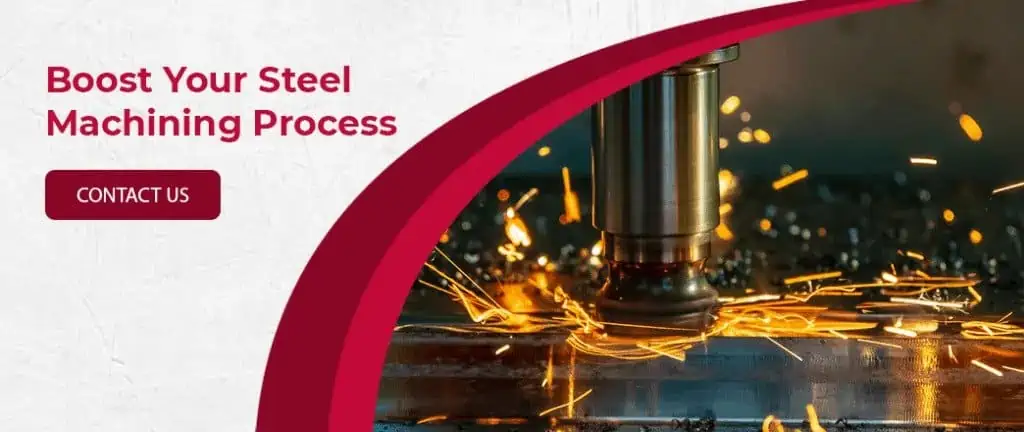
Table of Contents
- Machining Process for Steel
- Steel Machining Tips
- How is Machining Steel Different Than Other Materials?
- Common Steel Machining Applications
Stainless steel offers many benefits, from an attractive finish to high strength and durability. But those come at a cost for the machine and its operator. Steel can be a formidable opponent due to its strength and durability, but those features are what make it so useful in the first place. Between alloys, speeds and tool selection, many aspects will affect your final product and the process by which you create it.
Machining stainless steel parts takes a certain level of preparedness and understanding of the materials you’re working with. Below are some of our tips for machining steel.
Machining Process for Steel
When machining stainless steel, you’ll have to take into consideration all of its characteristics. Remember that it is strong, even at high temperatures.
1. Endmills
The tools you use will have a major impact on your project and the damage it can cause to your machine. The ideal type of endmill varies by application, but be sure to stick with a high-speed steel or carbide-constructed tool. High-speed steels include tungsten and molybdenum. Cemented carbides are a good choice when you need higher feeds or speeds. Make sure the cutting tool is sharp and in good condition to keep a high quality of cut.
- Roughing: An endmill with 4-5 flutes can offer sufficient roughing on steel. Remember that higher flutes make room for higher feed rates.
- Slotting: To slot steel, you’ll have to be aware of chip control and take enough care so your tools aren’t chewed up and your finish isn’t ruined. Try a four-flute endmill, which allows for chips to leave the cutting area more efficiently.
- Finishing: To finish steel parts, you’ll want a large number of flutes or high helix of over 40 degrees.
2. Feeds and Speeds
Now that you have the right tool selected, you need to ensure your speeds are appropriate. While it takes a little fine-tuning, a good starting point would be between 100 and 300 surface feet per minute (SFM) with chiploads ranging depending on the tool size.
Steel Machining Tips
Steel can be tricky to machine, but it’s not too bad if you are prepared and use the right settings and tools. Be sure to keep these concepts in mind as you machine steel.
- Keep heat low: Steel machining can generate very high temperatures, so take precautions to minimize their effects. Be sure to use a cutting fluid. Between work hardening and low thermal conductivity, keeping heat away from the cutting area is important to keep it in top shape. If excessive heat remains here, you may see distortion and a reduction in corrosion resistance. Cutting fluids help provide lubrication to wash away any chips, lower the wear on your tools and cool the endmill down. Common cutting fluids include mineral oils and emulsifiable oils. Make sure that you have plenty to use because any interruption of the coolant can lead to fluctuations in temperature, which can affect tool life.
- Avoid work hardening: Many steels have high work hardening tendencies. Make sure your tools are sharp and try to keep it moving to avoid any lulls in the cutting process that would lead to a buildup of heat.
- Control vibration: The strength of stainless steel and the speed it requires from the tool can cause extensive vibrations. Vibrations on your work surface can damage your finish while adding wear to your tool. You’ll need a robust, rigid tool capable of high-speed cuttings. Keep your workpiece firmly in place with clamps and minimize any tool overhang. You can also try using tools with a small nose radius.
- Know your material: Every steel alloy is a little different. Know the properties of the one you’re using so you can better adjust your machine to address its characteristics. The addition of sulfur, for instance, can allow for higher feeds by affecting the hardening of chips and helping the tool edge stay consistent. Lead allows for higher speeds since it provides a lubricating property that keeps the heat down.



